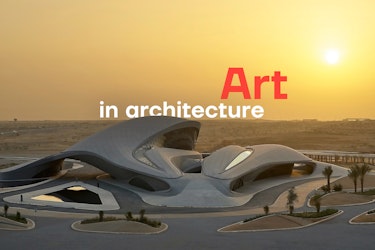Buildings and places influence daily life whether architecture is considered an art form. Modern cross-disciplinary explorations are revisiting tradition by testing the limits of architecture and the classification of art. These installations and constructions share characteristics of purpose, function, and artistic expression as alterations rooted in human experience. They also realign the constraints and opportunities of each career.
When an artist admits that his soul has arrived on the canvas, his artwork is finished; the same is true for architects when that same portion of the soul manifests in their work. Architecture may be strange because it's art. When art is used, all kinds of weird things might be anticipated. It enables the makers to be highly imaginative in their thinking. Knowing when to ask why and when to respond why not is the secret to success. The miraculous ability of art to communicate both the maker's presence and the existence of human consciousness.
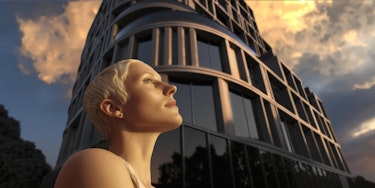
Art and architecture have long had a hazy relationship. It may not be as pure an art form as sculpture, but it still has to inspire and have an emotional effect in addition to serving as a usable area. That cannot just be turned off. The topic of art is brought up. Consider a museum; the main goal or design intention is to provide a setting for the art. If the building's demands are not supported by the architecture, the art is obviously not connected to the structure.
Even though the bulk of architecture prioritizes utility above form, excellent architecture combines form and function to create environments that are not only functional but also aesthetically pleasing. People can understand the significance of art through telling stories about it, being emotionally involved, or both. Art reflects the imagination and inventiveness of the creator. In addition to doing the same thing, good architecture must also fulfill the fundamental needs of a safe and functional building. All architects face the issue of producing usable art.
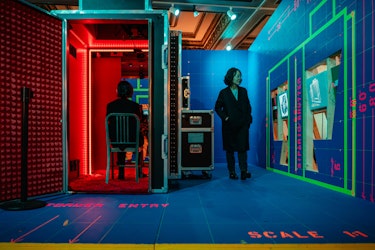
Credit: The New York Times
A symphony of planes, apertures, moldings, accents, textures, light, music, and views combine with the buildings and the user to provide an almost dynamic experience. That in and of itself is art. Architects who are also artists design spaces that convey ideas or inspire emotions in addition to serving a functional purpose. For instance, the Jewish museum in Berlin was accurately evoking a sense of entrapment, isolation, and hopelessness as one can only hear the faint sounds of the outside world beyond massive concrete walls; that is, that is how one must feel when leaving the history of Berlin. Libeskind's Holocaust Tower, a "between the lines" design, did this.
Whether it is art or architecture, the process of arriving at the final product takes hours of planning and execution rather than a single spark of inspiration. If you compare the path of an artist to that of a tornado, you can see the intensity of all the disciplines focusing on where the creative must find calm and tranquilly throughout the storm. If the architect succeeds, art may represent ideas, identities, cultures, and societies via the use of form, color, texture, and material interaction. Engineers and construction workers may have the technical expertise to put the building's elements together, but only an architect has the education, years of study in aesthetics, experience, and skill to create structures that are both aesthetically pleasing and functional.
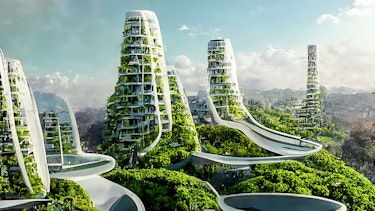
Credit: CNN
There are two approaches to design projects that allow for the coexistence of art and architecture. The first is additive art, in which the piece of art is added after the project is complete. It works best when done during the planning process, when a client could invite an art consultant to talk about the potential for including art in the room. Examples include empty walls for hanging paintings, towering ceilings for sculptures or a statement light fixture, or even outside walls that would be perfect for a mural. By employing this strategy, the building makes room for art.
While it's necessary for a building to operate properly and satisfy the demands of the client and occupants in that respect, it just takes a little bit of imaginative thinking to locate spots where we have the potential to include art into the building's overall design. Windows, lighting, and finishes are examples of practical requirements that may also be chances for the designer to make something beautiful. One should not undervalue the pure joy of seeing a stunning structure.
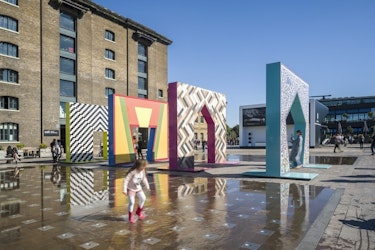
Credit: ArchDaily
There are two approaches to design projects that allow for the coexistence of art and architecture. The first is additive art, in which the piece of art is added after the project is complete. It works best when done during the planning process, when a client could invite an art consultant to talk about the potential for including art in the room. Examples include empty walls for hanging paintings, towering ceilings for sculptures or a statement light fixture, or even outside walls that would be perfect for a mural. By employing this strategy, the architecture makes room for art.
The second strategy is integrated. Since the art is a component of the building itself, this must be done as soon as possible. For instance, an artist was recruited to create an artwork for the façade of Martin Luther King, Jr. Medical Campus Parking Structure in Willowbrook, California. Thousands of painted metal panels set the bar for campus public art while also speaking to the university's history and culture. The finest projects may support both art and architecture.
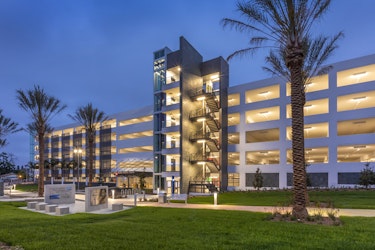
Credit: HMC Architects
The future contains boundless possibility for the influence that technology and art will have on the field of architecture. The combination of virtual reality (VR) and augmented reality (AR) makes it possible to present art in settings where it would not have previously been possible. For instance, hospital buildings must adhere to tight sterile environment regulations, and seismic requirements frequently make it difficult to install large sculptures. One may hold up their smartphone and observe digital art in the environment thanks to VR and AR. If a customer lacks the funding for art or is constrained by the building's function, this is a fantastic diversion and a terrific choice for enriching spaces.
If we look at art, it takes that societal behavior and challenges the way we see the world. I was only able to draw the conclusion from this that there is a flow of knowledge and creativity that occurs across all fields.
